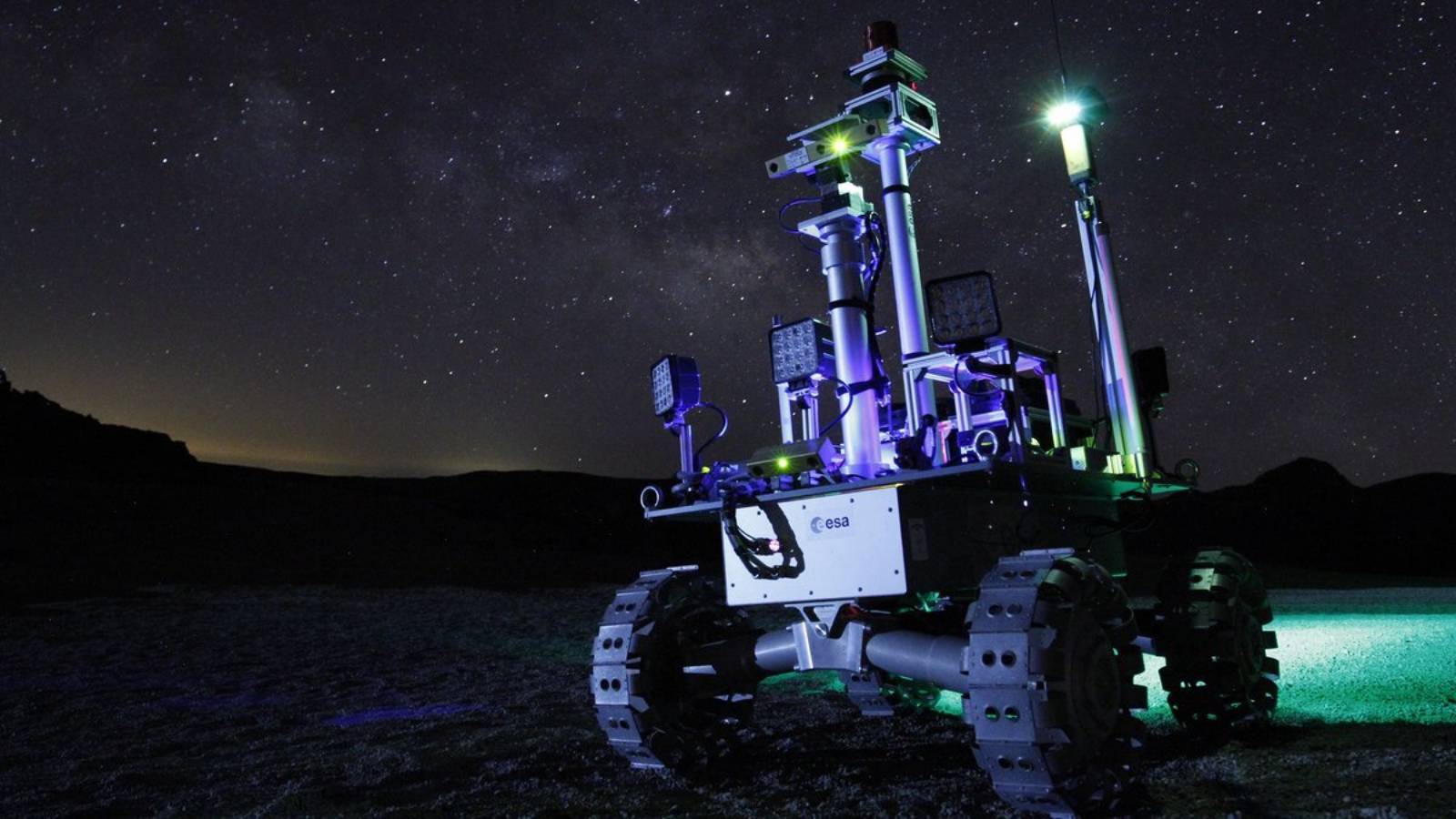Luna urmeaza sa fie explorata foarte curand de un robot special pe care ESA l-a dezvoltat pentru misiunile care urmeaza sa aiba loc acolo, si puteti vedea cum urmeaza sa arate instrumentul care ne va dzvalui noile sale secrete. Noul robot pe care ESA vrea sa-l trimita pe luna urmeaza sa functioneze cu ajutorul laserelor care ii vor furniza energie la distante de pana la 15 kilometri, iar asta ii va permite sa exploreze inclusiv cratere adanci fara a ramane fara energie.
Luna va avea explorate unele dintre craterele care in mai toata perioada anului sunt intunecate pentru ca sunt atat de adanci incat soarele nu ajunge sa le ilumineze vreodata. ESA este interesata sa descopere apa acolo, aceste zone fiind considerate bogate in hidrogen, ceea ce i-a facut pe cercetatori sa creata ca acolo ar exista inclusiv gheata, iar desigur ca separat de vizitarea cu acest robot, ei vor dori da si aduca probe pe Pamant.
LUNA: Robotul INCREDIBIL al ESA care o va Explora in Curand
Luna urmeaza sa aiba cel putin o baza construita de catre pamanteni, iar descoperirea apei ar putea fi una dintre cele mai importante pentru ca ar facilita construirea cladirilor in care vor sta astronautii. Mai mult decat atat, cu apa de pe luna ei vor avea ce sa bea, sau eventual ce sa cultive acolo, deci isi vor putea desfasura fara probleme viitoarele misiuni care urmeaza sa fie stabilite pentru a facilita si transportul catre planeta marte undeva dupa anul 2030, conform planului de acum.
“Rover-ul ar converti această lumină laser în energie electrică folosind o versiune modificată a unui panou solar standard, cu fotodioduri pe părțile laterale ale panoului, ținând-o blocată pe laser până la o precizie la scară centimetrică. Cu proiectul PHILIP finalizat, suntem cu un pas mai aproape de a alimenta rovers-uri cu lasere pentru a explora părțile întunecate ale lunii. Suntem în stadiul în care ar putea începe prototipul și testarea, întreprinse prin programe de tehnologie ESA de urmărire.”
Luna are in acele cratere temperaturi mai mici de -240 de grade Celsius, iar asta inseamna ca robotul ar trebui sa poata functiona in conditii extreme, ceea ce desigur ca ESA testeaza acum. Desigur ca vor exista si alte probleme pe care ESA va trebui sa le anticipeze pentru a se asigura ca astronautii trimisi acolo vor avea si cum sa supravietuiasca fara probleme, dar e destul de clar ca s-au gandit la multe dintre situatiile pe care ar urma sa le intampine astronautii.
Luna va avea acest robot trimis in curand de catre ESA, el fiind in stadiile finale ale procesului de pregatire pentru trimitere, asa ca va fi interesant de vazut ce anume se va intampla.






















